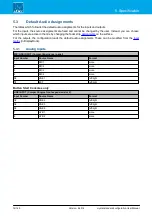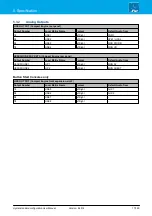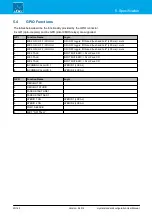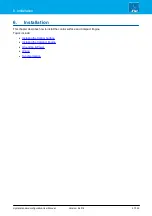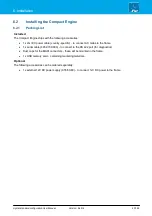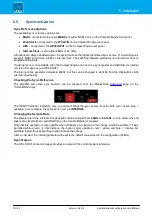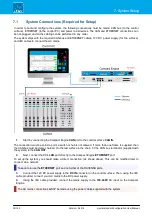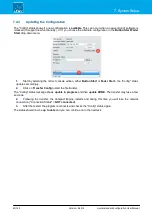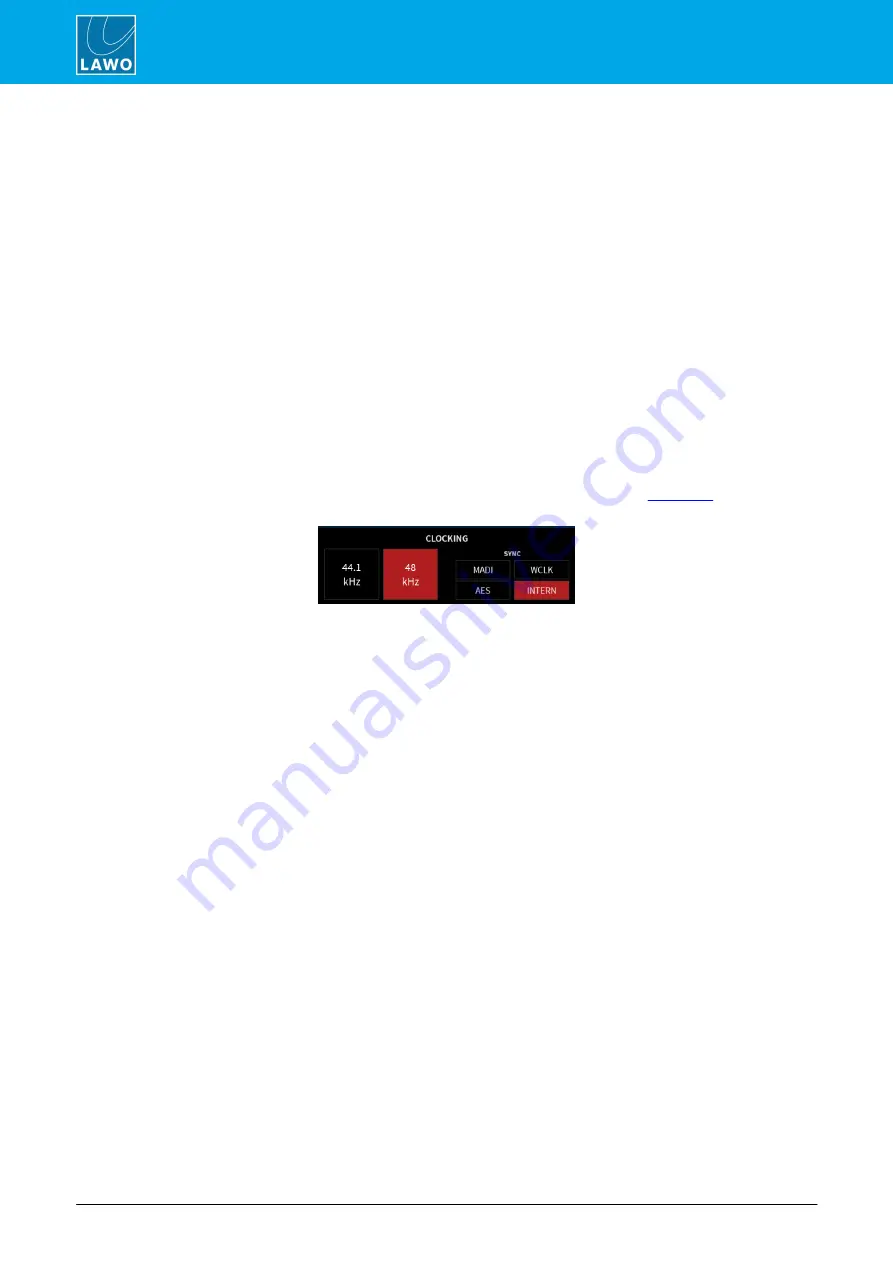
crystal standard configuration User Manual
Version: 6.4.0/4
30/149
6. Installation
6.5
Synchronization
Sync Reference Options
The available sync reference options are:
·
MADI
- connected to the active
MADI
port: either MADI 3 or 4 on the Compact Engine front panel.
·
Wordclock
– connected to the
WCLK IN
on the Compact Engine rear panel.
·
AES
– connected to the
AES3 INPUT
on the Compact Engine rear panel.
·
Internal Clock
– set to either 48kHz or 44.1kHz.
All options are always enabled and so the system will use the highest prioritized sync source (if a valid signal is
present): MADI, Wordclock, AES3 or internal clock. The switching between external sync and internal clock is
handled automatically.
If external sync is not available, then the Compact Engine can act as a sync master and distribute its internal
clock to other devices (via WCLK OUT).
The internal clock generator defaults to 48kHz, but this can be changed to 44.1kHz from the DisplayDock GUI
(as described below).
Checking the Sync Reference
The available and active sync sources can be checked from the DisplayDock
"CLOCKING" area):
The "SYNC" fields are indicators only; you cannot change the sync source from the GUI: red = active; blue =
available. In our example, the active sync source is
INTERNAL
.
Changing the Sample Rate
The sample rate of the internal clock generator can be changed from
48kHz
to
44.1kHz
, or vice versa, when all
faders are closed (off-air) and UNLOCK (on the Central Module) is pressed.
Note that this operation is only possible when all faders are closed (as the change would be audible if it was
permitted while on-air). In this instance, the button colors update to red = active and blue = inactive but
available. Select the inactive (blue) option to make the change.
After a cold start, the internal generator will reset to the default value stored in the configuration (48kHz).
Sync Output
The WCLK OUT
connector always provides an output of the current system reference.

